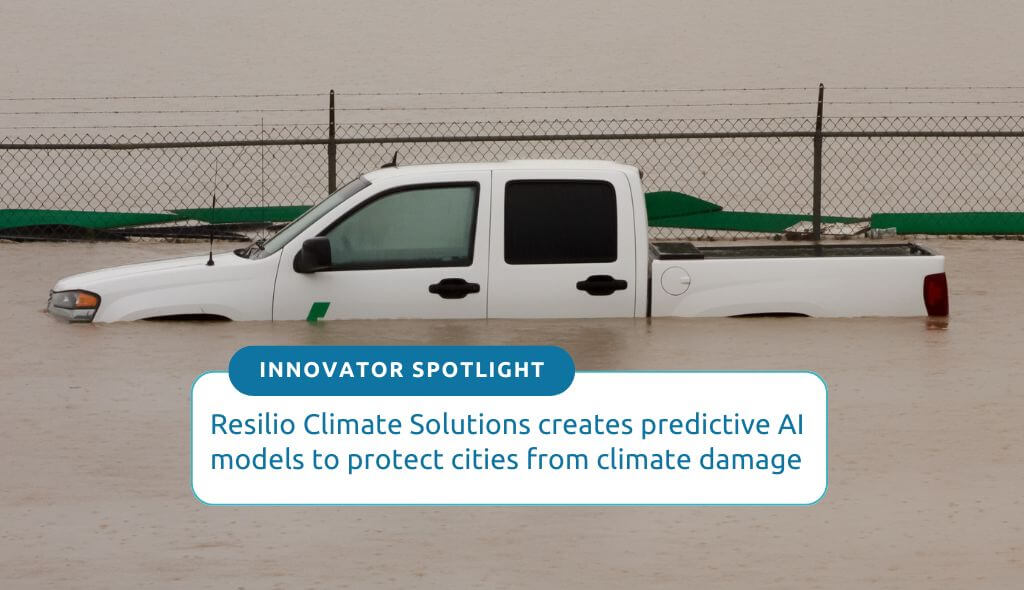Home » Resilio Climate Solutions creates predictive AI models to protect cities from climate damage
Resilio Climate Solutions creates predictive AI models to protect cities from climate damage

Canadian cities can use artificial intelligence to save millions while predicting and protecting themselves against climate change, say two McMaster engineering researchers behind a new virtual modelling system.
“We’re already seeing the impact of climate change and extreme weather on our municipal infrastructure,” explains Moustafa Naiem Abdel-Mooty, a researcher and instructor in the department of Civil Engineering.
“The 2013 Calgary flood and the Fort McMurray wildfires in 2016 are examples of how incredibly expensive and damaging it is for municipalities not to be prepared.”
Naiem, a Natural Sciences and Engineering Research Council of Canada (NSERC) postdoctoral fellow at Western University, did his doctoral work at McMaster, studying ways to enhance climate adaptation and resilience.
From machine learning to digital twins
He used machine learning (ML) to predict the impact of climate change on infrastructure systems, but soon realized he could do more using what’s called “digital twins” technology — creating an evolving virtual model of something based on real data and subjecting it to projected influences to predict how its physical version will be affected.
Naiem created a virtual, self-updating replica of a city that continuously exchanged data with what was happening in real life.
In 2022, Cambridge University invited him as a visiting research scholar, where he learned more about the civil applications of digital twin technology directly from pioneers in the field.
“I saw there was a huge gap between what we know how to do in our research and what was being done in the industry to inform climate adaptation and resilience,” he says.
“The U.K. and Australia are leading the world in climate adaptation because they have government mandates to use these technologies in decision-making as a way towards a future more resilient to climate change. We don’t have national efforts like this in North America. We don’t see it at all in Canada. We’re 10 years behind.”
How Resilio can help Canadian municipalities mitigate climate damage
With his former PhD advisor Wael El-Dakhakhni, a professor in the department of Civil Engineering, and postdoctoral fellows Maysara Ghaith and Ahmed Yosri, Naiem founded a business called Resilio Climate Solutions, to help bring Canada up to date.
Using a digital twin, they can now play out “what-if” scenarios and employ different measures to predict the best ways to reduce the impact of extreme weather events.
That includes protective actions such as building levees beside rivers or improving other flood-proofing measures to protect critical infrastructure.
Calgary was impacted by severe flooding in 2013, which forced evacuations, closed bridges and left thousands without electricity. The financial impact was huge, leading to as much as $6 billion in damage.
The Resilio team virtually went back in time to before the flood to create a case study to test their model.
They were able predict the flood with 85 per cent accuracy, and to suggest ways in which Calgary could have mitigated its physical and financial impact.
“Our digital twin tool is a game changer in climate adaptation and resilience building. It is designed to empower government and business leaders to optimize their adaptation budget spending while also educating community stakeholders on possible impacts of future climate extremes,” says El-Dakhakhni, Chief Technology and Scientific Officer at Resilio.
“We see everyone talking about climate change and resilience, but there are very few answers to pressing questions like ‘What shall we do now?’ Especially when it comes to neighborhoods and infrastructure at the city scale.”
Now or never: Resilio’s perspective on balancing climate resilience with emissions reduction
Naiem hopes to pitch the model to cities across Canada. “I want our municipalities to see the power of these tools to prevent and lessen impacts that we know are coming and will come more frequently,” he says.
“We’ve seen extreme weather events disrupting whole cities. Climate change is here. We’re beyond the point of stopping it, but we can lessen the impact.”
With leaders focused on reducing carbon emissions, successfully pitching the model will require convincing them that they should also set aside some money for limiting the impact of existing climate events.
“There is a cost to doing something, but what is the cost of doing nothing?”
“There is a saying that climate resiliency is being hijacked by the race to net zero,” Naiem says. “Everyone is putting their money into this basket and it’s very good to prevent a worse future, but where we are right now is already bad.”
Related news
Innovation Factory
Innovation Factory is a business accelerator, dedicated to helping Ontario-based businesses launch, scale, and succeed. Supporting the Brant, Halton, Hamilton and Norfolk regions, we provide start-ups, and scaling companies with advisory services, training, mentorship, and strategic connections to help bring disruptive technologies to market, leverage intellectual property, increase revenues, attract investment and create jobs. Innovation can happen anywhere, our goal is to make it work everywhere. We work to elevate key industry sectors including advanced manufacturing, clean tech, information technology, smart transportation, life sciences & health care and social innovations. We are passionate about driving the growth of Ontario businesses like yours. Whether you are an entrepreneur bringing new ideas to market or a scaling business trying to get to the next level, we want to help.

